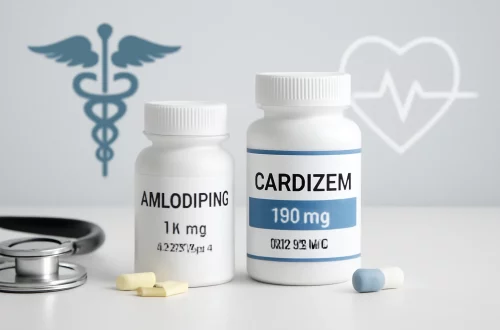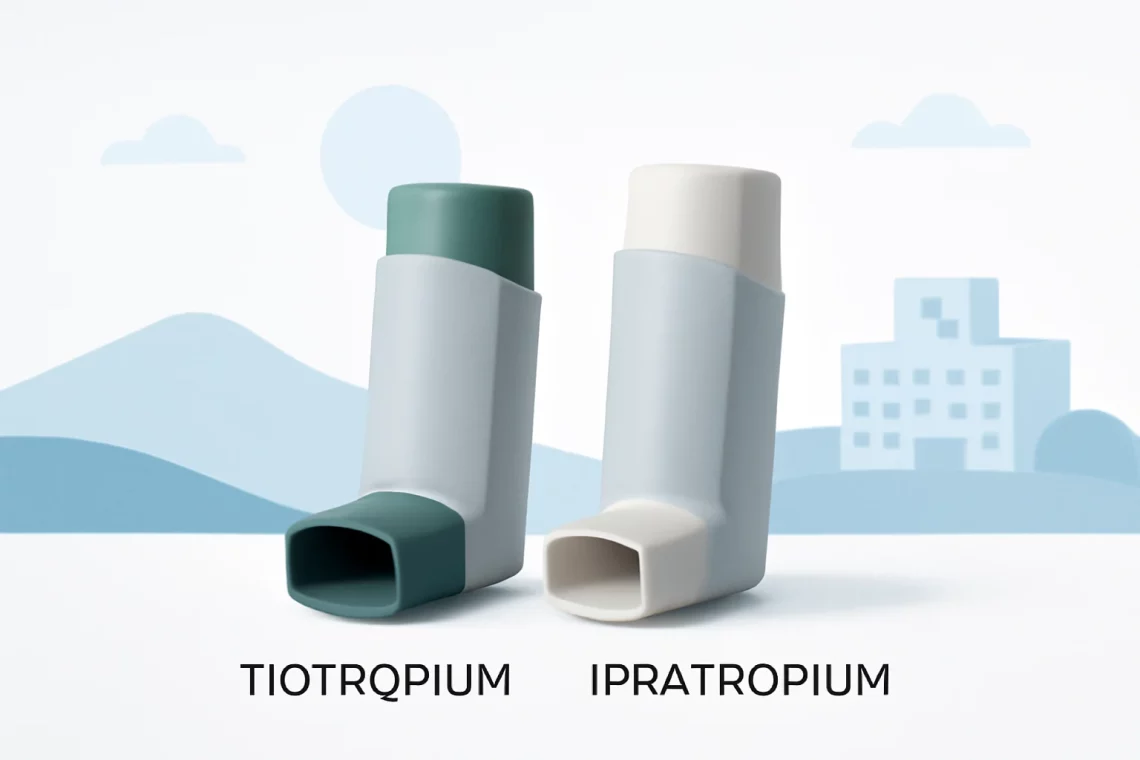Health
-
Diazepam vs Clonazepam: Which Medication Is Right for You?
In the realm of mental health and pharmacology, few medications have garnered as much attention as benzodiazepines, particularly Diazepam and Clonazepam. These drugs are widely used for their anxiolytic, anticonvulsant, and muscle relaxant properties. Both have carved out significant roles in treating various disorders, including anxiety, panic attacks, and certain types of seizures. However, their differences in mechanism, efficacy, and side effects can often lead to confusion for patients and healthcare providers alike. Understanding these differences is crucial for making informed decisions about treatment options. As the conversation around mental health continues to evolve, the importance of choosing the right medication has become more pronounced. Patients often find themselves navigating…
-
Benzonatate vs Codeine: Understanding Their Differences and Uses
Benzonatate and codeine are two medications commonly used to manage coughs, but they operate in distinctly different ways and have varying implications for patient care. Benzonatate is a non-narcotic cough suppressant that works by numbing the throat and lungs, reducing the urge to cough. On the other hand, codeine is an opioid that not only relieves cough but also serves as a pain reliever. Understanding the differences between these two medications is crucial for patients who may be considering their options for cough relief. Coughing can be a bothersome symptom caused by various conditions, including allergies, colds, and respiratory infections. Both benzonatate and codeine have their places in treatment protocols,…
-
Zepbound vs Mounjaro: A Comprehensive Comparison of Two Treatments
The world of pharmaceuticals is continuously evolving, presenting new solutions to longstanding medical challenges. Among the many innovations, two medications have gained attention for their roles in managing weight and metabolic disorders: Zepbound and Mounjaro. Both are designed to assist individuals struggling with obesity and related conditions, which have become significant health concerns globally. While they share some similarities, they also exhibit distinct differences that could influence their effectiveness and suitability for various patients. As the prevalence of obesity rises, so does the demand for effective treatment options. Traditional weight loss methods often fall short, leading to the exploration of pharmaceutical alternatives. Zepbound and Mounjaro are part of a new…
-
Naltrexone vs Methadone: Which is More Effective for Addiction Treatment?
The battle against substance use disorders has led to the development of various treatment options designed to assist individuals in overcoming addiction. Among these options, Naltrexone and Methadone stand out as two prominent medications, each with unique properties, mechanisms of action, and therapeutic uses. Understanding these medications’ differences and similarities is crucial for patients, healthcare providers, and families affected by addiction. Naltrexone is an opioid receptor antagonist that works by blocking the euphoric effects of opioids. It is primarily used in the treatment of opioid use disorder and alcohol dependence. By inhibiting the pleasurable sensations associated with these substances, Naltrexone can help individuals reduce cravings and maintain sobriety without experiencing…
-
Cephalexin vs Clindamycin: Which Antibiotic is Right for You?
Cephalexin and clindamycin are two antibiotics that are commonly prescribed for various bacterial infections. While both medications are effective in treating infections, they differ in their mechanisms of action, the types of bacteria they target, and their side effects. Understanding these differences is crucial for both healthcare providers and patients to ensure the appropriate antibiotic is chosen for a specific infection. In a world where antibiotic resistance is an increasing concern, selecting the right medication becomes even more vital. This article aims to delve into the characteristics of cephalexin and clindamycin, examining their uses, effectiveness, and potential side effects. By the end of this discussion, readers will have a clearer…
-
Benzonatate vs Mucinex: Which Cough Relief is More Effective?
When it comes to managing coughs and respiratory discomfort, many people find themselves navigating a wide array of over-the-counter medications. Among these, Benzonatate and Mucinex have gained popularity for their effectiveness in alleviating symptoms associated with colds, allergies, and respiratory infections. Both medications serve distinct purposes and work in different ways, making it essential for consumers to understand their unique properties and potential uses. Benzonatate, a non-narcotic cough suppressant, can help individuals struggling with persistent coughs by targeting the cough reflex in the brain. Meanwhile, Mucinex, which contains guaifenesin, is primarily an expectorant that aids in thinning mucus, making it easier to expel from the lungs. This difference in action…
-
Benzonatate vs Tessalon Perles: Which Cough Suppressant is Better?
Benzonatate and Tessalon Perles are two commonly prescribed medications used to manage cough symptoms. While both have similar applications, they differ in their active ingredients, mechanisms of action, and side effects. Understanding these differences can help patients make informed decisions about their treatment options. Coughing is a reflex that helps clear the airways of irritants, but chronic coughing can be uncomfortable and disruptive. Consequently, effective treatment is crucial for those suffering from persistent coughs due to various underlying conditions, such as allergies or respiratory infections. In recent years, the demand for effective cough suppressants has led to a more significant focus on medications like benzonatate and Tessalon Perles. As patients…
-
Vraylar vs Seroquel: A Comprehensive Comparison of Two Medications
Vraylar and Seroquel are two medications commonly prescribed for the treatment of mental health conditions, particularly bipolar disorder and schizophrenia. Both drugs play a significant role in managing symptoms, but they differ in their mechanisms of action, side effects, and overall effectiveness. Understanding these differences can be crucial for patients and healthcare providers when determining the most appropriate treatment options. While Vraylar, an atypical antipsychotic, works primarily by modulating dopamine and serotonin receptors in the brain, Seroquel, another atypical antipsychotic, has a broader range of receptor activity. This can lead to varying outcomes and experiences for patients taking these medications. It’s essential to explore the characteristics of each drug, their…
-
Comparing Tiotropium and Ipratropium: Which is More Effective?
Tiotropium and ipratropium are both anticholinergic medications primarily used in the management of respiratory conditions, particularly chronic obstructive pulmonary disease (COPD) and asthma. These medications work by relaxing the muscles around the airways, leading to improved airflow and easier breathing. Despite their similar therapeutic effects, tiotropium and ipratropium differ in several key aspects, including their duration of action, dosing frequency, and specific indications. As respiratory diseases continue to affect millions worldwide, understanding the nuances between these medications is crucial for both patients and healthcare providers. In this article, we explore the characteristics of tiotropium and ipratropium, examining their mechanisms of action, clinical applications, side effects, and overall effectiveness in managing…
-
Comparing Tiotropium and Ipratropium: Which is Right for You?
The management of chronic respiratory conditions has evolved significantly over the years, with various medications playing pivotal roles in improving patients’ quality of life. Among these medications are bronchodilators, which are essential in alleviating symptoms associated with conditions like asthma and chronic obstructive pulmonary disease (COPD). Two commonly prescribed medications in this category are Tiotropium and Ipratropium. These drugs, while both classified as anticholinergic bronchodilators, have unique characteristics, mechanisms of action, and clinical applications. Understanding the differences between them is crucial for healthcare providers and patients alike in making informed decisions regarding treatment options. As the demand for effective respiratory therapies continues to rise, the significance of these medications cannot…







































